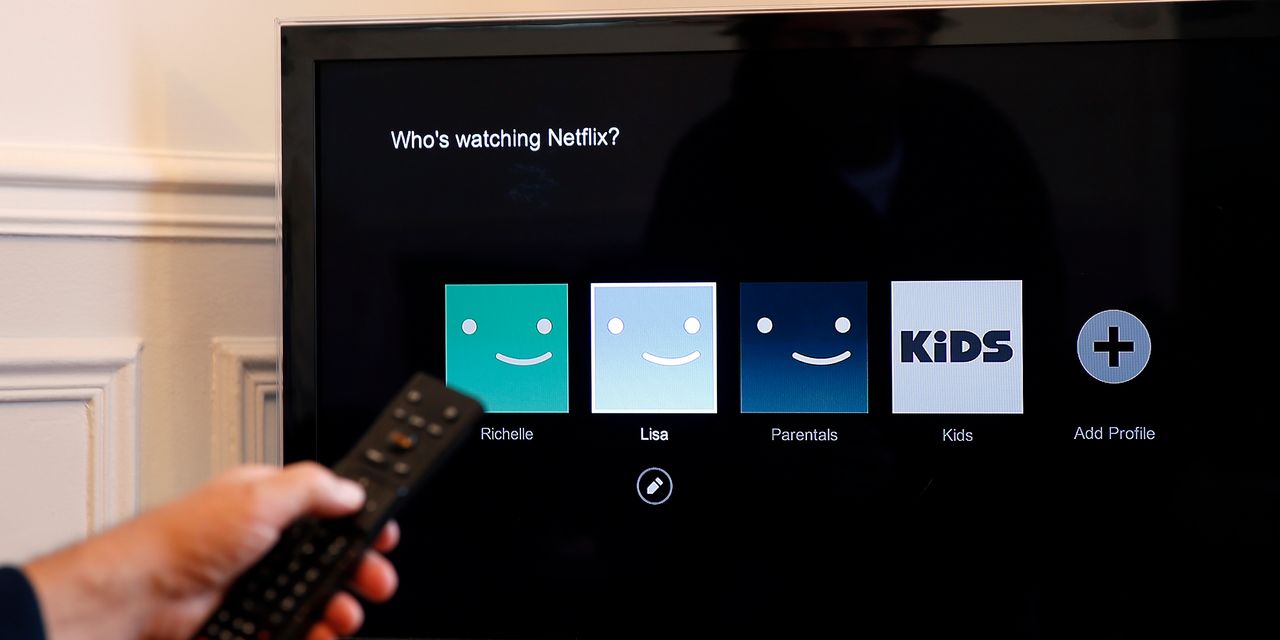Netflix
is finally cracking down on password sharing, and it’s giving me a headache. I can’t be the only one. By one estimate, roughly half of all U.S. Netflix subscribers share their passwords with at least one person not living in the same house. Netflix has made it clear that the gravy train has run out of track.
This week, Netflix (ticker: NFLX) announced that it is installing what it calls “paid sharing” for U.S. subscribers. The new rules say that a Netflix password is intended for use by all of the people living in one household. Anyone not in the household isn’t supposed to use that password and—while Netflix doesn’t say it specifically—the company will soon take steps to block the use of those passwords from other locations. (There are exceptions for devices used while traveling, such as your laptop, tablet, and smartphone.)
The company is allowing subscribers to add out-of-the-home family members, but it’s going to cost you. Subscribers already on Netflix’s most expensive plan at $19.99 a month can tack on two “extra members” at $8 each. Those users get to keep their preferences and viewing history. Standard subscribers, at $15.49 a month, are limited to one extra member.
And here’s where my headache becomes a migraine: I have three adult children living across the U.S.; Netflix wants me to split the baby. I can cough up $16 a month to cover two of my children. But what about kid No. 3? My cheapest option is paying for a separate ad-supported account, at $7 a month.
If I decide that all my kids are deserving of a dad-sponsored Netflix account, that would add $23 a month to my Netflix bill, bringing the total to $43, for a staggering increase of 115%.
To be sure, the potential strain on my wallet speaks to the significant opportunity Netflix sees from its new password policies. The company has said that about 100 million households worldwide are watching the service without paying anything. The company currently has about 233 million paying subscribers. Converting all of those non-paying watchers would grow its base by some 40%.
Makes you wonder what took them so long.
Wedbush analyst Alicia Reese writes in a research note that if even 10% of current Netflix members opt to add a single additional member, the company would generate an extra $1.7 billion in annual revenue at “virtually no marginal cost.”
Reese thinks the move will also drive subscriber numbers higher over time, “as many who are piggy-backing off of friends’ accounts will get pushed off.” While she thinks the crackdown is likely to boost churn, or cancellations, in the near-term, she writes that most of those users will return in the following weeks and months. Reese suspects that many of the new standalone subscribers will choose the streamer’s ad-supported tier, given their prior unwillingness to pay full price.
That’s fine with Netflix, which recently noted that the extra revenue from advertising means ad-supported subscribers generate more dollars for the company than its standard subscribers. Reese recently reiterated her Outperform rating on the stock. She assigns a price target of $410, or about 15% above its recent close.
Oppenheimer analyst Jason Helfstein is even more bullish about Netflix’s get-tough plan, responding to the news by boosting his price target on the stock to $450, from $415. Helfstein’s firm recently surveyed 1,800 U.S. Netflix watchers about their reaction to a planned crackdown. The results are eye-opening.
Of the survey group, 80% said they were already paying for the service—suggesting that the other 20% were freeloading—and 48% said they share their password with someone not in their household. He sees that as a potential 36 million new subscribers.
In reporting its first-quarter financial results in April, Netflix said that it had already rolled out “paid sharing” in four markets—Canada, New Zealand, Spain, and Portugal—after previously testing the strategy in Latin America. The company said that in Canada, after an initial spike in customer churn, the number of subscribers is higher than before it began enforcing the limits on sharing passwords. Netflix says that revenue growth is now faster in Canada than in the U.S.
This just might turn out to be a huge growth accelerant for Netflix, a smart way to boost subscriber numbers in the company’s largest market—where growth has stalled out, with basically no growth in U.S. subscribers over the last four quarters.
The result of the get-tough policy should be more subscribers, a boost in the company’s advertising tier, higher revenue, and improved profitability. This has the potential to be a big win for Netflix. If only I could figure out what I’m going to tell my kids.
Write to Eric J. Savitz at [email protected]
Read the full article here


